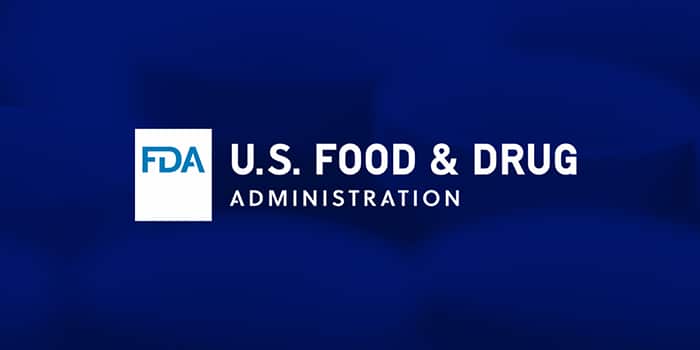After settling a lawsuit for not meeting a 2012 deadline set by the Obama administration, the Food and Drug Administration (FDA) last week published a long awaited proposed rule requiring producers and processors of “high-risk” foods to keep more detailed records to improve supply chain traceability. While the agency believes an industry-wide standard for tracing high-risk foods could help identify an outbreak’s source 84% faster, reducing illnesses and costly recalls, the plan could require additional capital investments from some food producers, and the FDA is debating whether small companies should be exempt.
The draft rule, which is open for comment until Jan. 21, 2021, is part of the agency’s Smarter Era of Food Safety initiative which is rolling out over the next ten years. The compliance date for traceability records will be two years after the final rule is published. Over a decade, the FDA estimates the benefits will result in savings of $33 million to $1.4 billion for the overall industry, including prevention or reduction of product recalls.
The Food Safety Modernization Act (FSMA), which was signed into law in January 2011 by President Obama, originally mandated the FDA to create a list and traceability standard for high-risk foods by 2012. Having failed to meet that deadline, the FDA was sued by the Center for Food Safety (CFS) in 2018; the case was settled last June with a newly agreed-upon deadline of Sept. 8, 2020.
Under the proposed rule, going forward, all companies handling high-risk foods, including nut butters, leafy greens, herbs and tomatoes, would be required to maintain key data on ‘Critical Tracking Events,’ including growing, creating, shipping, receiving and repackaging foods. The records may be physical or digital but must include an electronic, sortable spreadsheet of traceability data that can be provided to the FDA within 24 hours of a request.
The current regulations, created in 2004, require companies only to track information for a food product’s immediate previous source and the next recipient. This leaves “significant gaps” of information for outbreak investigations and prolongs the process, the FDA said. There also has been no singular standard process for tracing ingredients.
“While some food companies and retail chains have adopted effective traceability systems, rarely are these systems compatible with each other,” an FDA spokesperson said. “Still, many other food companies have not adopted traceability systems at all.”
The new rule would pertain to foods the agency deems high-risk for contamination: the list so far mostly covers fresh items like leafy greens, fresh herbs and tomatoes. However, it also can apply to products that contain those ingredients, such as a pesto or tomato sauce, but only if made without the use of a ‘kill step’ such as cooking, pasteurization or high-pressure processing (HPP). Producers that do use a ‘kill step’ would be exempt from these new requirements and allowed to keep following the current rule, the FDA noted.
The list also includes all tree nut and peanut butters following a string of salmonella outbreaks in recent years. For example, a 2014 outbreak impacted products from organic brands Arrowhead Mills and MaraNatha as well as private label almond butter from major retailers including Whole Foods, Trader Joe’s, Kroger and Safeway. Some cases have led to lawsuits and jail sentences for company executives. The new rule also applies to foods that contain nut butter such as snack bars or candy if they are not cooked or baked.
Though other ingredients have been the source of foodborne illnesses, it remains to be seen whether more will be added to the final rule. In the past, the Centers for Disease Control and Prevention (CDC) linked certain previous outbreaks to dried coconut and rice, for example, yet these products are not currently on the list.
Small operators with 10 or fewer full-time employees are exempt from the current traceability rule, and the FDA is considering whether to exempt them from the new requirements as well. With small manufacturers fully exempt, the FDA estimates that the combined costs for all operators involved would be between $238 million and $17 billion over 10 years.
To determine the best path forward, the agency is seeking feedback on whether having 10 or less full-time employees is the best way to define a ‘small’ company and whether such companies should be fully or partially exempt. However, the agency added that small companies can be valuable in “narrow[ing] the scope” of outbreak investigations.
To meet the new regulations, companies may need to invest in infrastructure including software, scanners or barcode readers, printers and data storage. If the final rule considers smaller companies ‘partially exempt,’ they wouldn’t need to provide electronic spreadsheets, helping avoid that added cost. If the final rule deems them ‘fully exempt’ they would continue following the current rule.
The agency also plans to offer some exemptions due to financial hardship.
Even if smaller producers are exempt, the agency feels confident that simply requiring larger operators, such as retailers, to maintain records could close many of the current information gaps. Even if the FDA doesn’t require smaller producers to maintain these records, larger producers may mandate that all their vendors (small or large) share this information so that their own records are up to date.
According to Frank Yiannas, FDA deputy commissioner for food policy and response, this is just the “first step” to more quickly trace contaminated foods, lessen the scope of recalls and prevent illness and death. The ultimate goal, he said, is preventing future outbreaks.
“While limited to certain foods, this proposed rule would [pave] the way for industry to adopt and leverage more digital, tech-enabled traceability systems both in the near term and the future,” Yiannas said in a statement.
